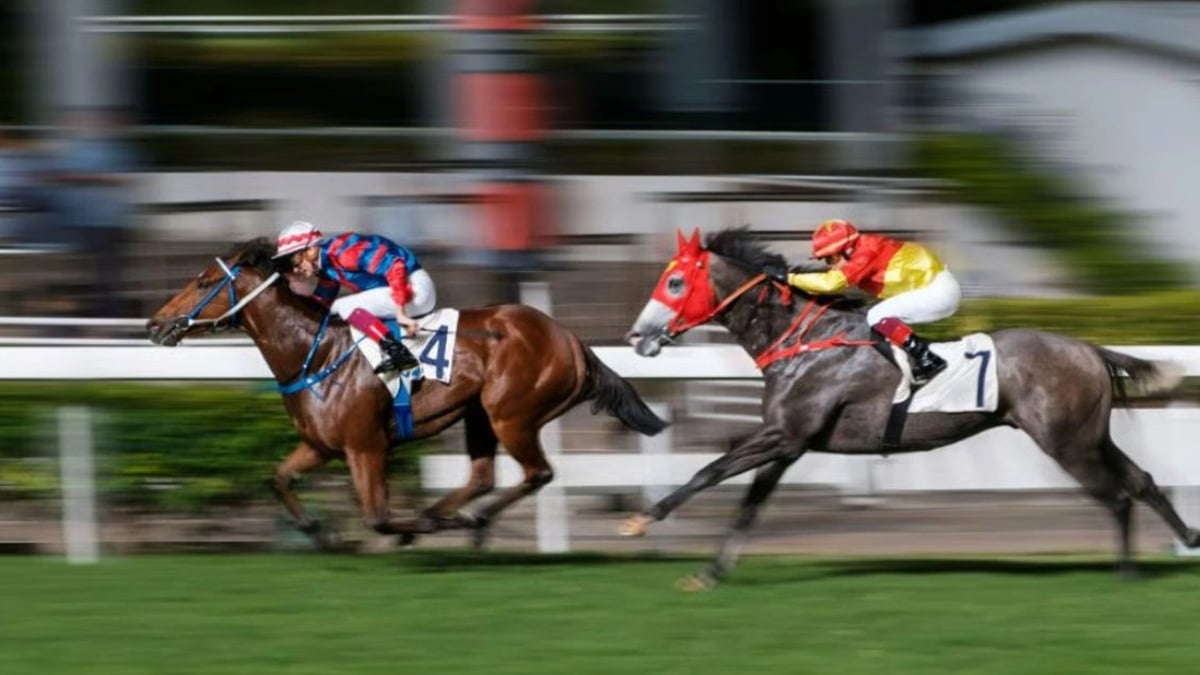Horse Racing Betting Strategies: A Comprehensive Guide

Horse racing betting is one of the most challenging and engaging forms of gambling.
This guide details how to pick winning horses, no matter the type of race. You will gain insight into how to analyze horse racing form thoroughly, how to handicap races, and how to maximize returns through specific betting tactics.
- #ad. 18+. Gamble Responsibly. Gambleaware.org. Must be 21+ and present in OH. Gambling Problem? Call 1-800-GAMBLER
How to Read Horse Racing Odds
Before we delve into strategy, we must first explain the most common ways you’ll see horse racing odds displayed.
Fractional vs. Decimal
Betting odds are typically displayed in two primary formats: fractional or decimal.
- Fractional: The numerator represents the return you would receive as a multiple of the denominator. So, a winning £1 bet at 5/1 odds would return £6 (£5 profit + £1 stake). Fractional odds can also be non-round numbers, like 11/4, which equals 3.75 in decimal form. A £10 bet on an 11/4 horse would yield a total return of £37.50 (£27.50 profit + £10 stake).
- Decimal: This format (e.g., 6.0) directly shows the total return for every unit staked.
Evens vs. Odds-On vs. Odds-Against
A horse priced at evens (1/1 fractional or 2.0 decimal) is considered a double-your-money wager.
Any price lower than evens is considered “odds-on.” In this case, the number on the left of the fractional odds is smaller than the number on the right (e.g., 2/7).
Conversely, any price higher than evens is “odds-against.” If a horse is strongly favoured, it is usually odds-on. A £70 wager on a 2/7 horse would return £90 in total (£20 profit plus £70 stake)
Types of Horse Racing Bets
- Win Bet: This is the most straightforward bet, where you back a selection to win the race outright.
- Place Bet: These bets mean your selection only needs to finish in a place position for you to win a return.
- Each-Way Bet: This combines two separate bets—a win bet and a place bet. The Win part of the bet functions as a standard win bet. The place part pays out if your horse finishes within a designated number of top positions (e.g., second, third, fourth, or sometimes fifth).
- Doubles: These are two selections from two different races, where the odds of both selections are multiplied.
- Trebles: These are three selections from three different races, where the odds of both selections are multiplied.
- 3/4/5-Fold Accumulators: These consist of more than two selections, where all selections must win for the bet to pay out. Each-way accumulators are also possible, where you win if all your horses place.
- Trixie: This bet involves three selections and comprises four separate bets—three doubles and a treble.
- Yankee: This comprises four selections and 11 bets (six doubles, four trebles, and a fourfold). You can still get a return if only two of the four selections win.
- Lucky 15: A Lucky 15 bet combines 15 bets of equal value on four selections—four singles, six doubles, four trebles, and one four-fold accumulator.
Types of Horse Races
Horse races can be divided into Jump (National Hunt) and Flat.
Jump Racing
Jumps racing involves horses leaping over obstacles (the main types being hurdles and fences). The minimum distance is just under 2 miles. Races over hurdles can exceed 3 miles, and races over fences can extend to more than 4 miles. Fences are typically used in races called steeplechases, or “chases” for short.
Jump horses are usually taller and leaner and tend to have longer careers than Flat horses. They can start racing between the ages of 3 and 5 and continue their entire lives.
Weather conditions vary during Jump races, leading to softer ground.
Flat Racing
Flat races are significantly shorter in distance compared to jump races. The minimum distance is typically 5 furlongs (1000m), and the maximum is 2 miles 4 furlongs (4000m).
Because of this, Flat horses tend to be smaller, faster, and stockier, with shorter careers, racing for only about two years before retirement.
These races occur predominantly during warmer months when the surface is typically drier.
How to Pick a Winning Horse
You must move beyond gut instinct or a horse's name to pick a winning horse. Serious bettors put together more coherent strategies based on the factors below.
You can combine various methods depending on the race type, number of runners, type of bet, and desired stake.
Study Form
You should look for past wins ("1s"), check when the horse last raced, and the grade of previous races. A horse finishing fifth in a high-pedigree race might be more impressive than a win in a lesser one.
Decide if the horse is still improving, and consider long-term injuries. Do not solely focus on the closing stages, as races can be decided at the start or experience mid-race incidents.Analyze Head-to-Head Performance
Note the previous winning distances between horses. Sometimes, a third-place finish behind a superior horse may be stronger than an outright win.
Consider Course & Distance
A horse with "CD" next to its name on the racecard has previously won at that specific course and over the same distance. Tracks vary greatly, and not all horses perform well across all venues.
Evaluate Trainer & Jockey Influence
Be aware of leading trainers, who often saddle multiple winners. Leading jockeys typically ride the best horses, so their choice of horse can be telling. Backing proven trainers and jockeys can be a shortcut to finding system busters.
However, ignore pre-race comments from trainers or jockeys and don’t blindly bet on the most recognizable names.Understand Handicap Weights
In handicap races, horses carry different weights based on their official ratings. The best horse on previous performance carries top weight, and the "worst" carries bottom weight. Selecting a favorably handicapped horse (one carrying less weight) can be profitable, especially over long distances.
Assess Going Conditions
The "going" refers to the ground condition at a race meeting. Significant rainfall can lead to soft or heavy going; sunshine can result in good to firm ground. Some horses are suited to good ground; others (called “mudlarks”) thrive in heavier conditions.
Going significantly affects a horse's chances of victory. This can present opportunities for bettors to bet against favorites with a history of not performing well under such conditions.Pay Attention to Age
Experience can benefit a horse, while younger horses could be on an upward trajectory. Age trends exist for high-profile National Hunt races, such as five-year-olds traditionally not faring well in the Champion Hurdle.
Observe the Betting Market
Odds leading up to a race can be very revealing. A sudden "gamble" (heavy betting) on a particular runner often suggests that the horse has a better chance than implied by the original odds, indicating that bookmakers or experienced punters may have additional information.
Top 5 Horse Racing Betting Strategies
- Oppose Short-Priced Favourites with Lay Betting: This involves betting against a favoured horse. Opposing horses with a poor draw can be effective, particularly in races where the field turns early. Laying favourites that have demonstrated an inability to perform on extreme going can create opportunities.
- Maximize Each-Way Bets (Especially in Large Fields): This allows for a profitable return if your selection finishes within the specified place terms. Seek out "bad each-way races” (maiden or novice races featuring a short-priced favourite with a potential vulnerability) and back the second or third favourite.
- Follow In-Form Trainers: Identifying trainers on a successful run can be profitable, especially when it’s a smaller stable whose runners may go unnoticed. Get in early and use ratings to determine if a horse exceeds expectations. Know when to stop backing a trainer’s horses, too.
- Watch Sectional Times: Records of a horse's performance over specific race segments are becoming more accessible. Analyzing this data helps determine which performances are impressive and which are deceptive.
- Back Big-Priced Outsiders on Exchanges: Betting exchanges, as opposed to traditional betting sites, typically offer better prices and higher returns for punters who back long-shot outsiders.
Keys to Successful Long-Term Horse Racing Betting
A clear betting system can help you make quicker and more consistent bets on horse races. They can be tailored, combined, and refined to suit individual preferences, allowing for adjustments over time.
Embrace Hard Work
Professional gamblers spend hours finding an edge, a far cry from the glitz and glamour of a day at the racetrack.
It takes dedication to become a successful horse racing bettor, and it doesn’t happen overnight. Success is measured over years, not days. Even the best bettors have bad days.Master Handicapping & Research
No matter your strategies, every system is a form of handicapping, assigning value to horse traits and form, then comparing them with bookmakers' odds.
To do so, it’s critical to watch back previous horse races to identify dynamics not apparent in a formbook. Ignore comments from trainers and jockeys, and instead rely on your own research.Optimize Best Available Odds
Always get the best available odds on your selections. Look for Best Odds Guaranteed betting offers, which ensures you get the better price between your early bet and the starting price. You can use our horse racing odds comparison tool to get started.
Take advantage of bonuses and odds boosts to maximize value and reduce risk, especially when backing high-priced horses.Maintain a Strict, Disciplined Bankroll Management
Discipline is the most critical factor for long-term success. It means making clear decisions, conducting thorough research, and avoiding impulsive bets.
Never chase losses. If you have confidence in your methods, stick to them. If not, identify and address the flaws. Straying from your plan can be detrimental.Continuously Evolve Strategies
A horse racing betting strategy must evolve with time, constant research, and new angles. Profitable strategies can lose their value as they become widely known or are countered by bookmakers.
You have to be comfortable experimenting with new approaches, even if it means losing here and there. The most successful punters are early adopters. Keep thorough notes and records, and review your system at the end of each season.















